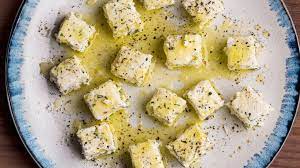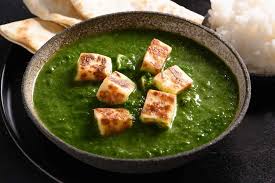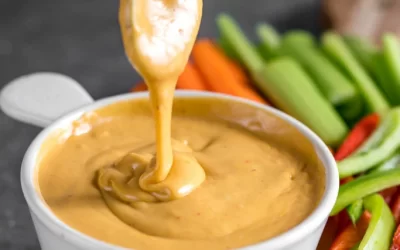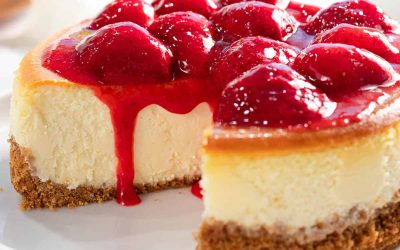Introducing the Ultimate Paneer Cheese Delight: Unveil the Magic of Indian Cuisine!
Imagine sinking your teeth into a dish that captures the essence of India’s rich culinary heritage while satisfying your cravings for a creamy, indulgent treat. Brace yourself for an extraordinary journey as we present you with an exquisite Paneer Cheese recipe that is set to tantalize your taste buds and transport you to the vibrant streets of India.
Paneer, the beloved Indian cheese, forms the heart and soul of this culinary masterpiece. Its luxurious, velvety texture, combined with a medley of aromatic spices, creates a symphony of flavors that dance harmoniously on your palate. Whether you’re an avid lover of Indian cuisine or a curious food explorer, this recipe promises an unforgettable experience that marries tradition with innovation.
¿What is Paneer Cheese?
Paneer cheese, often simply referred to as “paneer,” is a fresh, unaged cheese that is widely used in Indian cuisine. It is a staple ingredient in many Indian dishes due to its mild and versatile nature. Paneer is made by curdling milk using an acidic ingredient like lemon juice, vinegar, or curd. The resulting curds are then drained and pressed to remove excess moisture, creating a firm yet soft cheese with a crumbly texture.
Paneer doesn’t undergo the aging or fermentation processes that are characteristic of many other types of cheese, which contributes to its unique taste and texture. Because it is unaged, paneer has a mild and neutral flavor, making it an excellent canvas for absorbing the rich and aromatic flavors of various Indian spices and sauces.

In Indian cuisine, paneer is used in a multitude of dishes. It’s often cubed and added to curries, gravies, and vegetable dishes, where it absorbs the flavors of the sauce and provides a creamy, protein-rich element. Paneer can also be grilled, fried, or sautéed to add a delightful texture to appetizers, snacks, and kebabs.
Due to its high protein content and versatility, paneer has gained popularity beyond Indian cuisine and is now enjoyed by people around the world. Whether you’re a fan of Indian cooking or simply looking to explore new flavors, paneer cheese offers a delicious and satisfying culinary experience.
Paneer cheese Recipe
Get ready to unlock the secrets of crafting Paneer Cheese that’s tender, succulent, and bursting with a delightful fusion of spices. From the very first bite, you’ll embark on a culinary adventure that celebrates the magic of Indian cooking, making every moment in the kitchen a celebration of flavors, culture, and the joy of crafting something truly extraordinary.
Join us as we delve into the art of transforming humble paneer into an exceptional cheese delicacy that’s as versatile as it is delectable. Whether as the star of your main course or a show-stopping appetizer, this Paneer Cheese recipe is destined to be the highlight of your dining table. So, roll up your sleeves, gather your spices, and prepare to create a dish that not only delights your taste buds but also carries with it the warmth and tradition of Indian cooking. Your culinary masterpiece awaits!

Ingredients:
- 1 gallon (3.8 liters) whole milk
- 1/4 cup lemon juice or white vinegar
- Cheesecloth or muslin cloth
- Heavy-bottomed pot
- Colander
Instructions:
Step 1: Curdling the Milk
- Pour the milk into a heavy-bottomed pot and place it on medium heat.
- Slowly bring the milk to a gentle boil while stirring occasionally to prevent it from sticking to the bottom of the pot.
Step 2: Adding Acid 3. Once the milk comes to a boil, reduce the heat to low and add the lemon juice or white vinegar. Stir gently.
- You’ll notice the milk starting to curdle as the curds separate from the whey. If the milk doesn’t curdle completely, you can add a bit more lemon juice or vinegar.
- Turn off the heat as soon as the curds and whey are clearly separated.
Step 3: Draining the Curds 6. Line a colander with cheesecloth or muslin cloth and place it over a sink or a large bowl to catch the whey.
- Carefully pour the curdled milk into the lined colander, allowing the whey to drain away. The curds will remain in the cheesecloth.
Step 4: Pressing and Shaping 8. Gather the corners of the cheesecloth and gently twist to squeeze out excess whey.
- Place a heavy object like a cast iron skillet or a pot filled with water on top of the wrapped curds. This will help press the curds into a solid block.
- Let the curds press for about 1-2 hours to achieve the desired firmness.
Step 5: Unwrapping and Storing 11. Once the paneer is pressed, unwrap it from the cheesecloth and cut it into cubes or slices as desired.
- Your homemade paneer cheese is now ready to use! You can use it immediately in your favorite recipes or store it in an airtight container in the refrigerator for up to a week.
Notes:
- The whey leftover from the process can be used in cooking or baking, or as a nutritious addition to smoothies.
- If you prefer a milder taste, you can rinse the curds with cold water after draining them to remove excess acidity.
- Paneer can be used in various dishes, such as curries, stir-fries, grilled skewers, and even desserts.
Enjoy the satisfaction of creating your very own batch of creamy and versatile homemade paneer cheese!
¿What kind of cheese is paneer?
Paneer is a type of fresh, unaged cheese that originates from the Indian subcontinent. It is not the same as traditional Western cheeses like cheddar, mozzarella, or Swiss cheese. Paneer is unique in that it is made without the aging or ripening processes that are common for many other types of cheese.
While it’s not directly comparable to Western cheeses, if you were to draw a loose similarity, you could think of paneer as somewhat similar to cottage cheese in terms of its texture and moisture content. However, paneer has a much firmer texture compared to cottage cheese or goat cheese.
The process of making paneer involves curdling milk using an acidic agent like lemon juice or vinegar. The curds that form are then drained, pressed, and cut into cubes. This process yields a cheese that is delicate, crumbly, and has a mild and neutral flavor. Paneer’s lack of aging gives it a unique ability to absorb flavors, making it an ideal canvas for various spices and sauces in Indian cuisine.
If you liked this article, we recommend you to check this one about La Tur Cheese



0 Comments